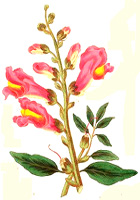Candida albicans is a fungus that thrives and propagates on sugar and carbohydrates. By definition, candida albicans is basically the overgrowth of yeast in the body. Yeast is actually not bad for the body. In fact, it grows in most of the food we eat. Vinegar has yeast. Most fruits such as apples and pears have yeast in them. The fruit juice you drink earlier has yeast. Even milk-based foods such as cheese and ice cream contain yeast. The candida yeast is also present in several portions of our body, particularly in the digestive system. However, when the yeast outgrows itself in the body, that’s where the troubles begin. Candida albicans thrives on the excess of yeast in the body. So those who have yeast infection should be more wary about eating food particularly those rich in sugar and carbohydrates. Yeast likes to prosper from food that contains sugar, salt, and chemicals. When the Candida albicans multiply and cause further contamination, an ailment referred to as candiasis develops. This is why people who have Candida albicans are advised to watch their diet. Eating healthy foods is essential to preventing the fungus or yeast from rapidly developing. However, how does one identify which foods are okay to eat, and which are detrimental to the health of those with Candida albicans? The glycemic index is a good way to determine which food is okay or not okay to eat for those with Candida albicans. But what is the glycemic index? The glycemic index is a system that arranges food according to its carbohydrate content and its consequences on blood glucose. Pure glucose which has a glycemic index of 100 is the point of comparison for foods. Using the glycemic index, apples are 49, mangoes are 69, while soft drinks are 100. Now, basing from the glycemic index, those who have Candida albicans in their bodies should refrain from eating high-glycemic foods, or those foods that like soft drinks, are rated from 70-100. Among these foods are ripe bananas, papayas, and grains such as bread, bagels, and cereals. Vegetarians should also look closely on their diet and refrain from eating staples such as potato, sweet corn, and carrots. Those who like to gorge on sweetened juices should also be wary of their intake of sports drinks and canned juices. Those with a sweet tooth are also not spared from this friendly counsel. Sweet favorites such as honey and corn syrups are considered as high-glycemic foods. Fast food items like hamburgers, doughnuts, pancakes, and waffles are likewise classified as high-glycemic foods, and thus should be taken out of the diet. The same goes for other popular food items such as hotdogs, pretzels, corn chips, rice cakes, and ice cream. In the long run, it is best for those with yeast infection to try to eat low-glycemic food such as apples, tomatoes, onion, garlic, oatmeal, green tea, and water, among others. Eat healthy foods instead. Whole foods that are free from sugar and chemical are best options for anyone suffering from yeast infection. Remember that nutrition is very important in order to neutralize or lessen the effects of Candida albicans. In the end, the battle against Candida albicans all ends up with your determination and willingness to put some discipline in your diet.
www.bearingfruit.net
.
Sous Vide Lobster Tails
-
[image: Sous Vide Lobster Tails]
I love lobster and although it’s pricey, it’s worth the splurge when
entertaining or celebrating a special ocaasion. As a...
1 year ago














No comments:
Post a Comment